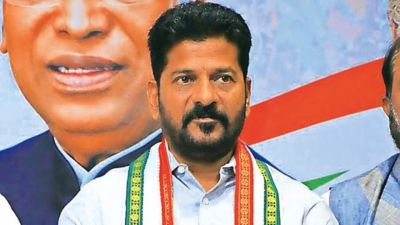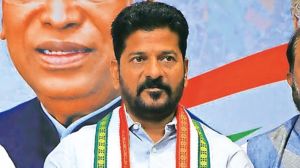Harikishan Sharma, Senior Assistant Editor at The Indian Express' National Bureau, specializes in reporting on governance, policy, and data. He covers the Prime Minister’s Office and pivotal central ministries, such as the Ministry of Agriculture & Farmers’ Welfare, Ministry of Cooperation, Ministry of Consumer Affairs, Food and Public Distribution, Ministry of Rural Development, and Ministry of Jal Shakti. His work primarily revolves around reporting and policy analysis. In addition to this, he authors a weekly column titled "STATE-ISTICALLY SPEAKING," which is prominently featured on The Indian Express website. In this column, he immerses readers in narratives deeply rooted in socio-economic, political, and electoral data, providing insightful perspectives on these critical aspects of governance and society. ... Read More
Poll-bound Maharashtra, Chhattisgarh get over 1/3rd share of rural housing scheme for 2024-25
Chhattisgarh tops the list with 8.61 lakh houses (over 22 per cent of the total allocation), followed by Maharashtra with 6.37 lakh (over 16 per cent). The other states in the top five list are: Madhya Pradesh with 3.68 lakh houses, Gujarat with 2.99 lakh and Bihar with 2.43 lakh.
 The target set for the second phase of PMAY-G is 2 crore houses by 2028-29, of which 40 lakh were to be built in the first year (2024-25).
The target set for the second phase of PMAY-G is 2 crore houses by 2028-29, of which 40 lakh were to be built in the first year (2024-25).WHILE THE Union Ministry of Rural Development has allocated 37.80 lakh houses to 18 states under its Pradhan Mantri Awaas Yojana-Gramin (PMAY-G) for 2024-25, BJP-ruled Chhattisgarh and poll-bound Maharashtra together account for over one-third of the total.
Chhattisgarh tops the list with 8.61 lakh houses (over 22 per cent of the total allocation), followed by Maharashtra with 6.37 lakh (over 16 per cent). The other states in the top five list are: Madhya Pradesh with 3.68 lakh houses, Gujarat with 2.99 lakh and Bihar with 2.43 lakh (see chart).
Contrast this with the first phase of the PMAY-G (2016-2024), when the overall target was 2.95 crore houses, of which Chhattisgarh, which had a Congress government till November last year, got 11.76 lakh (3.98 per cent) and Maharashtra got 13.78 lakh (4.67 per cent).

The target set for the second phase of PMAY-G is 2 crore houses by 2028-29, of which 40 lakh were to be built in the first year (2024-25). Of the 40 lakh, the ministry has allocated 37,80,374 houses to 18 states — Chhattisgarh, Maharashtra, Madhya Pradesh, Gujarat, Bihar, Karnataka, Kerala, Assam, Rajasthan, Odisha, Jharkhand, Himachal Pradesh, Haryana, Uttar Pradesh, Tamil Nadu, Punjab, Manipur and Andhra Pradesh.
West Bengal and Telangana are two big states among the remaining states and Union Territories which have not been listed. The Centre has stopped release of funds to West Bengal under PMAY-G and MGNREGA, while Telangana did not implement the first phase of PMAY-G.
According to sources, of the 37.80 lakh target for 2024-25, at least one installment has been released to 19.67 lakh beneficiaries, and 4,691 houses have been completed (till November 12). “The money is transferred into bank accounts of the beneficiaries through the Aadhaar Payment Bridge (APB) system,” said a source.
According to the PMAY-G, each beneficiary gets funds up to Rs 1.2 lakh in the plains and Rs 1.30 lakh in hilly states, difficult areas, tribal and backward districts under the Integrated Action Plan (IAP). The money is released in four installments and the beneficiary is given 12 months to complete construction.
The Centre and the states share expenses in the ratio of 60:40 in case of plain areas, and 90:10 for Northeastern states, two Himalayan states, and Jammu & Kashmir. The Centre bears 100 per cent of the cost in case of other Union Territories, including Ladakh.
Recently, the Centre further relaxed the “automatic exclusion” criteria under the PMAY-G to allow families which own two-wheelers, motorised fishing boats, refrigerators, landline phones and with monthly income up to Rs 15,000 to avail of the rural housing scheme.
Soon after returning to power earlier this year, the BJP-led government, at its first meeting on June 10, had announced its decision to build 2 crore houses under the second phase of the PMAY-G. These houses were in addition to the 2.95 crore rural houses approved under the government’s previous two terms.
On August 9, the Union Cabinet approved an outlay of about Rs 3,06,135 crore for this purpose, which included a Central share of about Rs 2,05,856 crore and State share of about Rs 1,00,281 crore, according to an official release.
Presenting the interim Budget for 2024-25, Finance Minister Nirmala Sitharaman had allocated Rs 54,500.14 crore for PMAY-G for 2024-25, which is almost the same as last fiscal’s budgetary allocation of Rs 54,487.00 crore. Of this, Rs 12,000 crore has been spent so far.





- 01
- 02
- 03
- 04
- 05



























